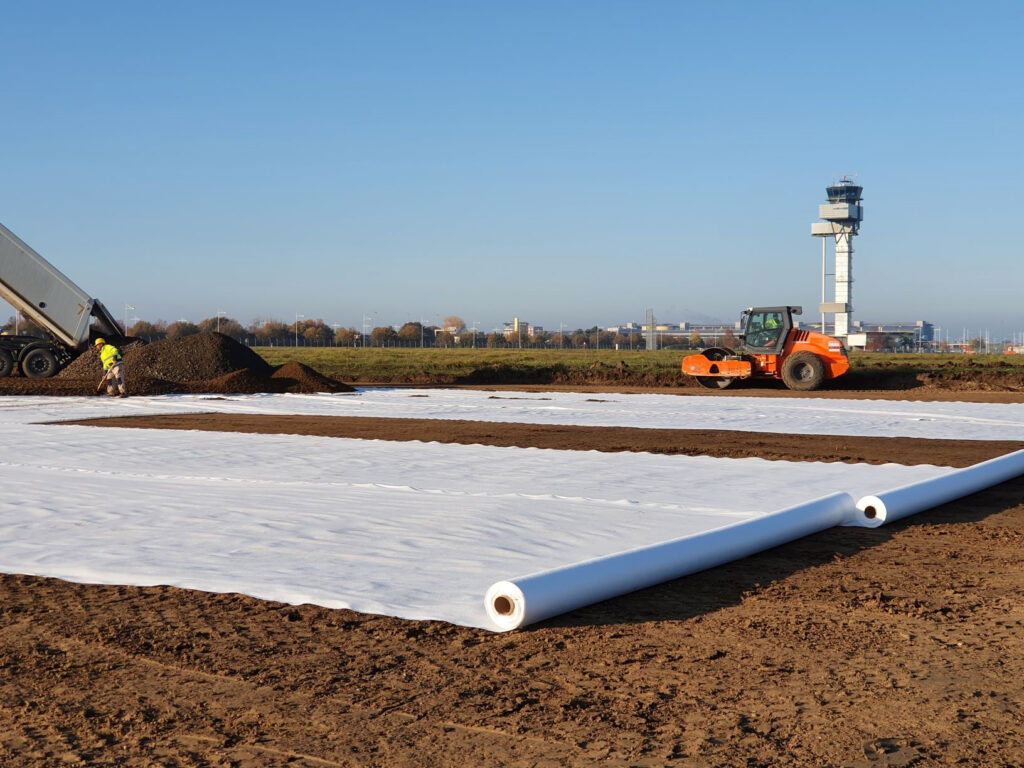What are the types of geotextiles?
Geotextile is a synthetic material used in civil engineering and environmental engineering, usually for reinforcement, filtration, isolation, corrosion protection and other purposes.
According to their different functions and uses, geotextiles can be divided into several main categories:
Isolation geotextile: Mainly used to prevent mutual mixing and cross-penetration between different soil layers to maintain the stability of the soil. Based on the manufacturing process and use, isolation geotextiles can be divided into different types of short fiber and long fiber.
Filter geotextile: Mainly used to filter particles in the soil layer to prevent soil particles from being washed away or penetrating into other layers. It is commonly used in earth-rock dams, drainage ditches and other projects that require drainage.
Reinforced geotextile: Used to enhance the strength and stability of soil, especially in weak foundations and soils. This type of geotextile typically has high tensile strength and stiffness.
Anti-seepage geotextile: Used to prevent water penetration, usually used in dams, pools and other places that require waterproofing. This type of geotextile usually includes a waterproof membrane layer such as polyethylene or polyvinyl chloride.
Anti-erosion geotextiles: Used to slow down water flow and prevent water from eroding soil. This type of geotextile is usually used in river banks, embankments, slopes, etc.
Geogrids: Unlike traditional geotextiles, geogrids are made of rigid or partially rigid materials used to strengthen soil and distribute loads. It is often used to strengthen roadbeds, retaining walls and other structures that require reinforced soil.
Sponge city geotextile: Used for rainwater management in urban construction, promoting rainwater penetration and slowing down rainwater runoff, and helping to alleviate urban waterlogging.
The selection of these geotextiles depends on the requirements of the specific project, including soil type, project application, terrain characteristics and design specifications. Different types of geotextiles are usually used in conjunction with each other in engineering to achieve a more comprehensive effect.

geotextile price
The price of geotextiles is usually affected by a variety of factors, including material type, specification, thickness, size, production process, market supply and demand, and price levels in the region. Due to market volatility and regional differences, specific prices cannot be provided. However, here are some general guidance on geotextile prices:
Type and function: The price of geotextiles will vary with different types and functions. For example, anti-erosion geotextiles, anti-seepage geotextiles and reinforced geotextiles may be relatively more expensive, while some basic isolation geotextiles may be relatively low-priced.
Material quality: The quality of materials will also directly affect the price. High-quality, durable geotextiles are typically more expensive, but they can provide longer service life and better performance.
Size and Thickness: The size and thickness of the geotextile will also have an impact on the price. Generally speaking, larger sizes and thicker geotextiles will have a higher cost.
Market supply and demand: Market supply and demand will also affect the price of geotextiles. A lack of supply or an increase in demand can cause prices to rise, while an oversupply can cause prices to fall.
Regional differences: There may be large differences in price levels in different regions. Therefore, the price of geotextiles will vary depending on the economic conditions of the region, transportation costs and market demand.
When purchasing geotextiles, it is recommended to compare with multiple suppliers and consider factors such as different brands and quality to get the most cost-effective product. The best option is to look for reliable quality geotextiles and ensure that they meet engineering needs and specifications.

